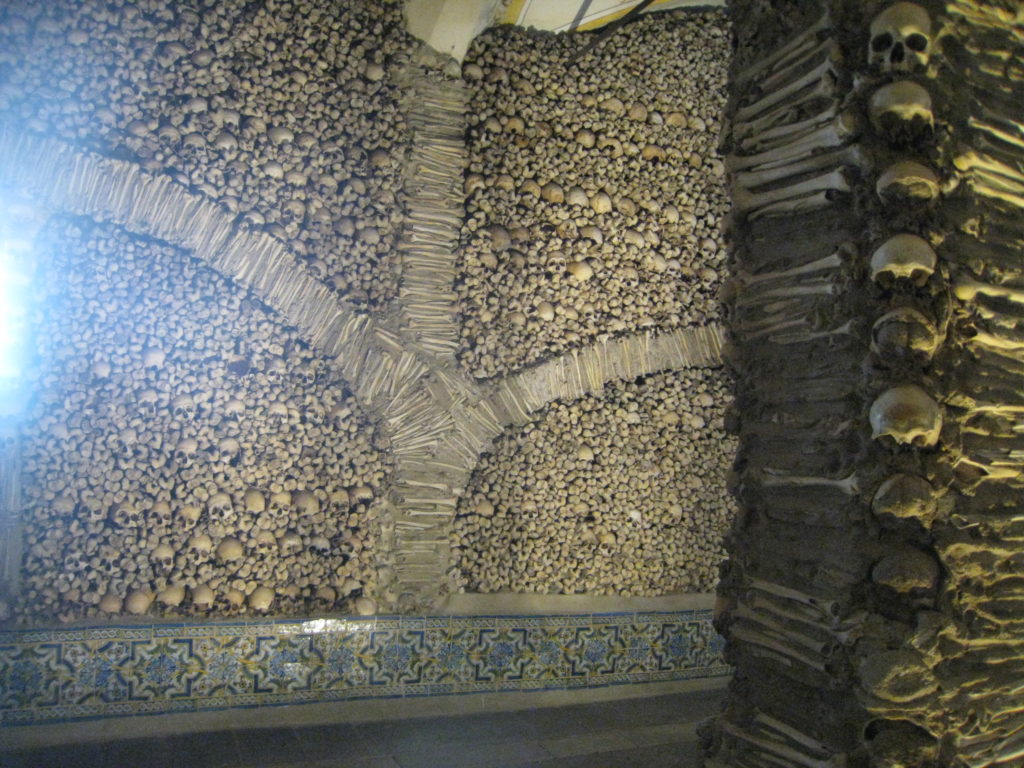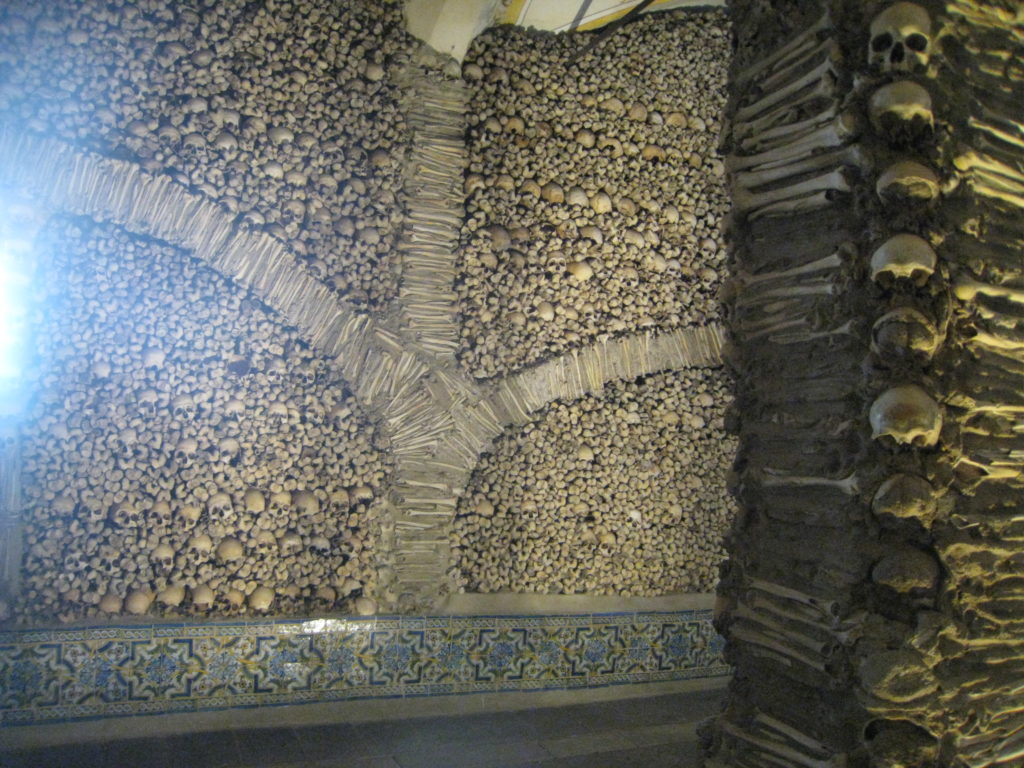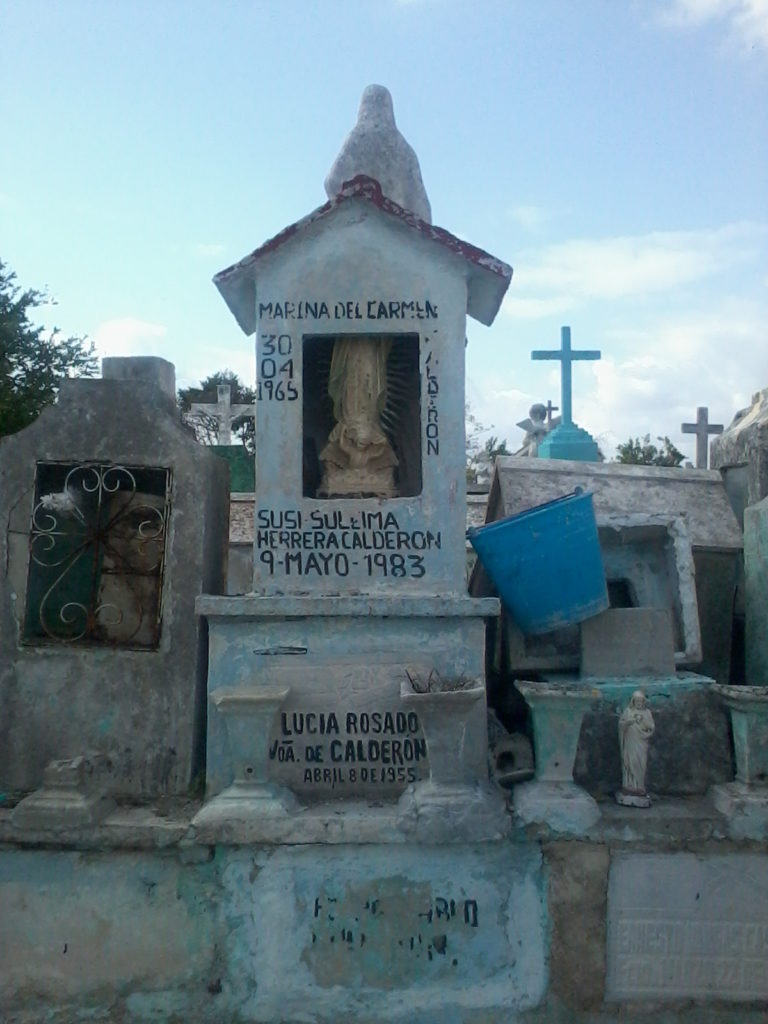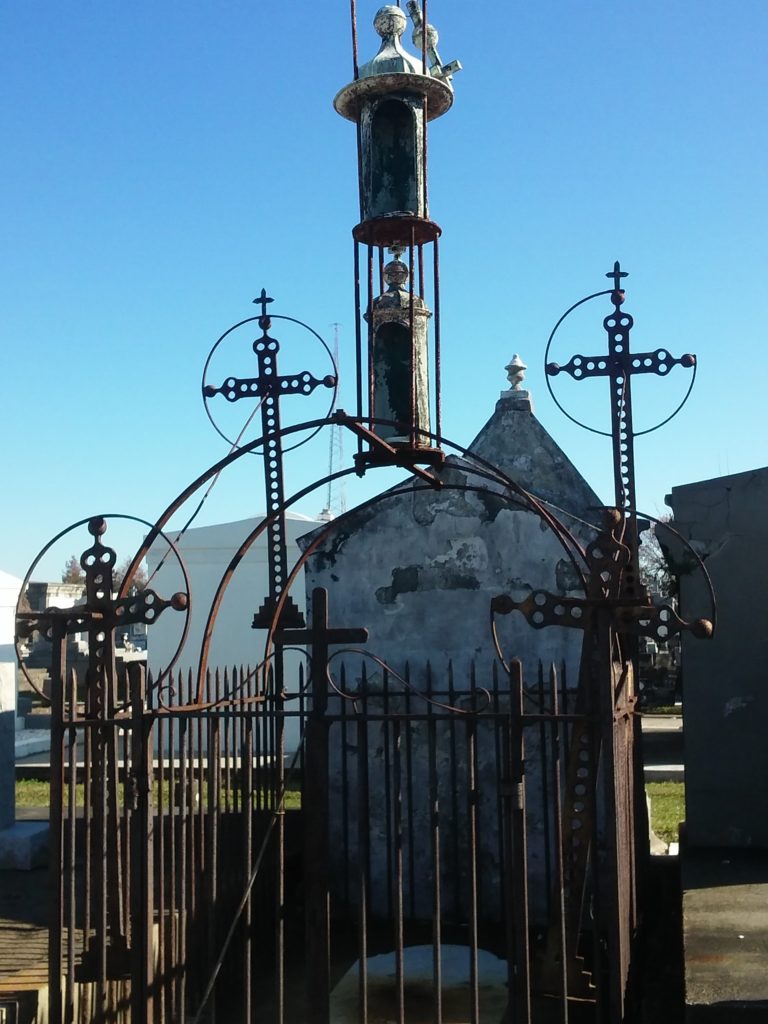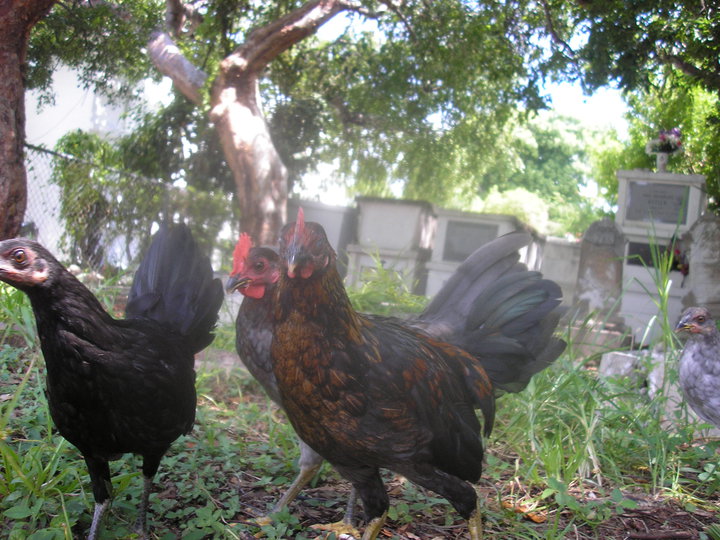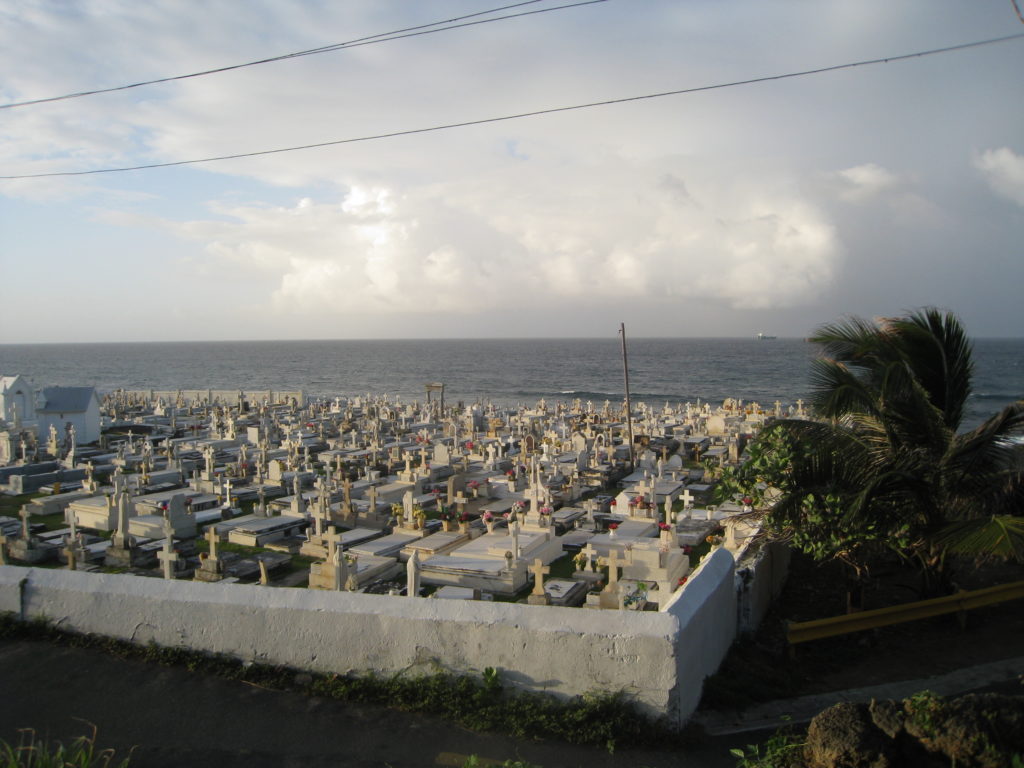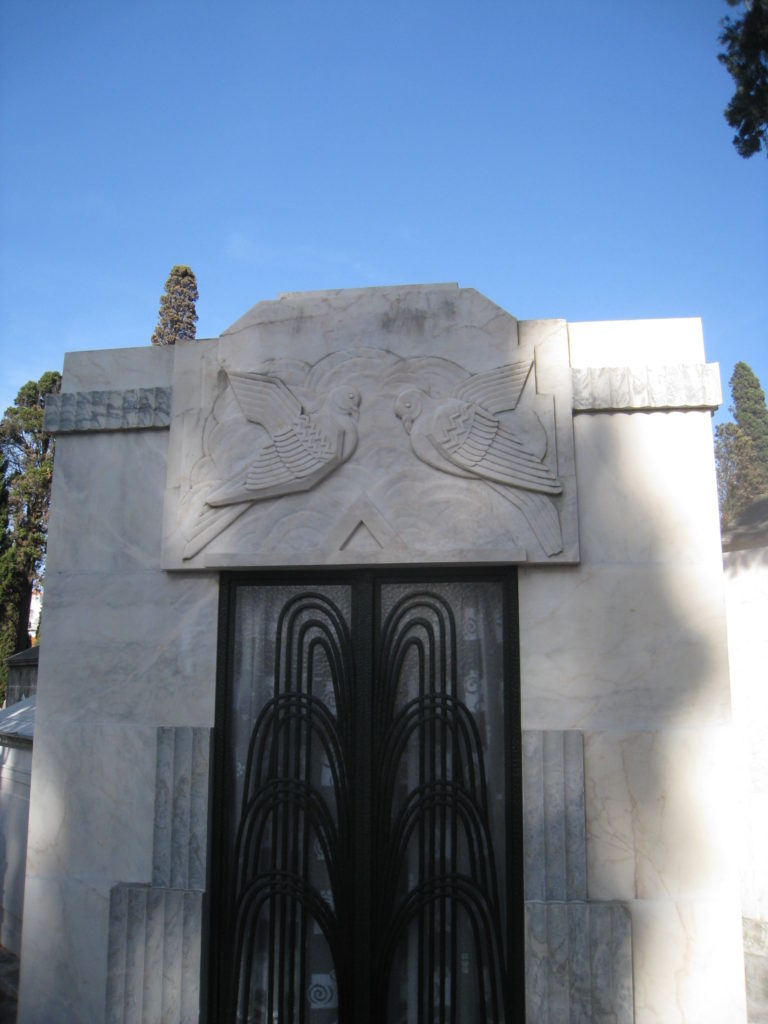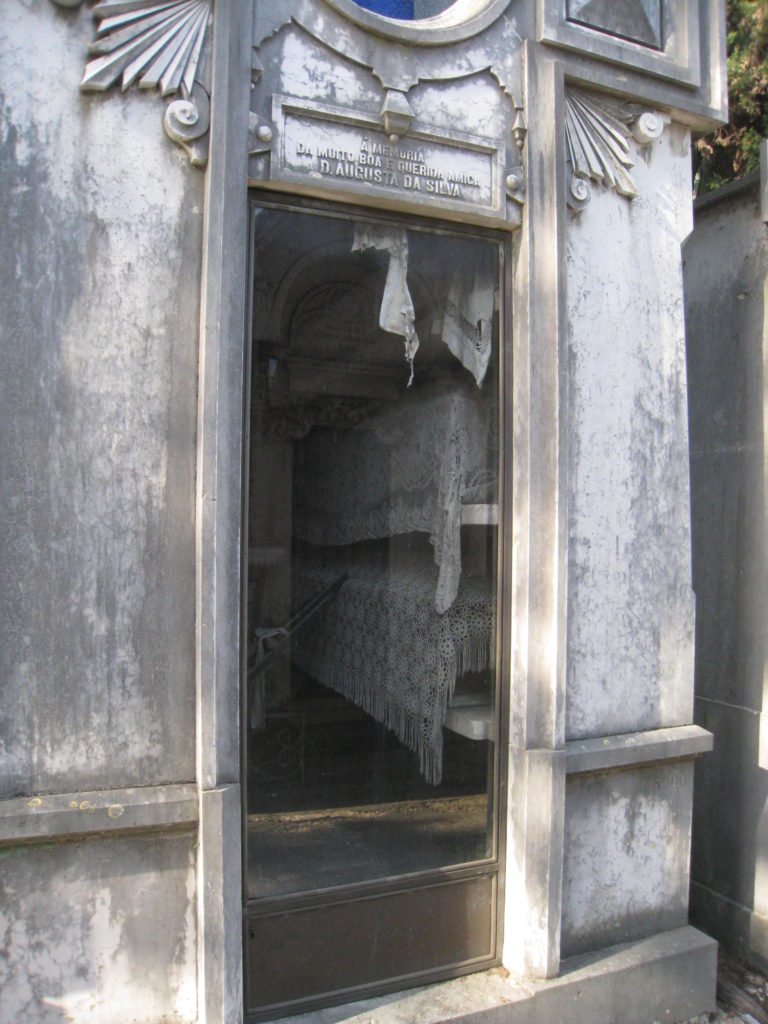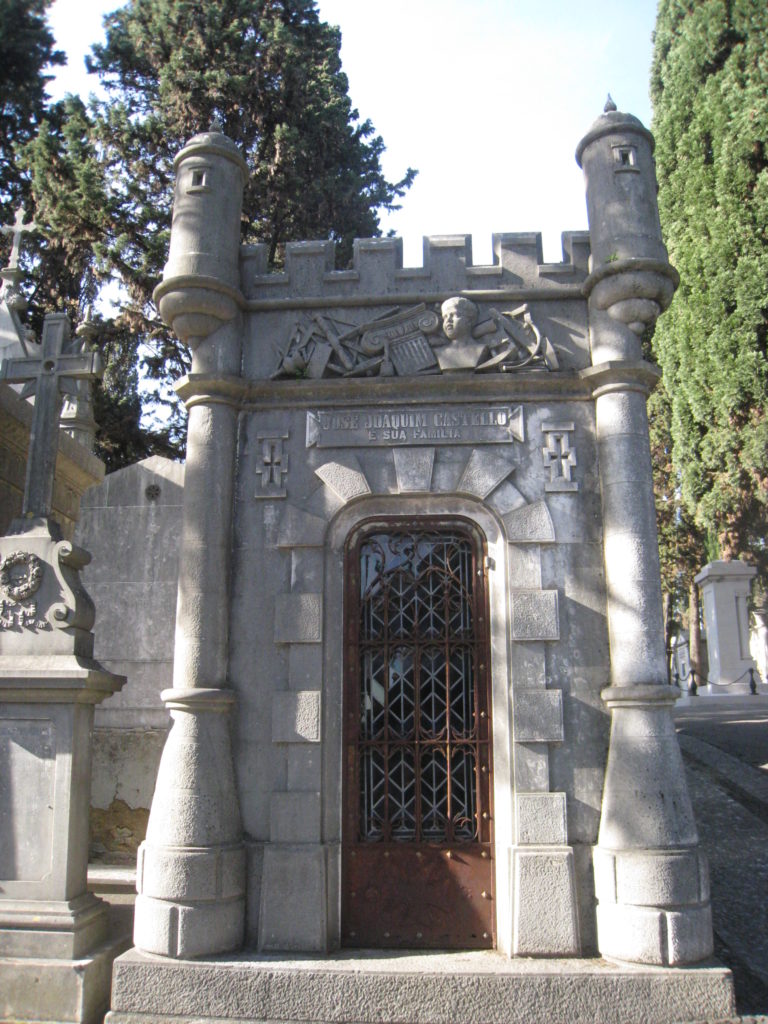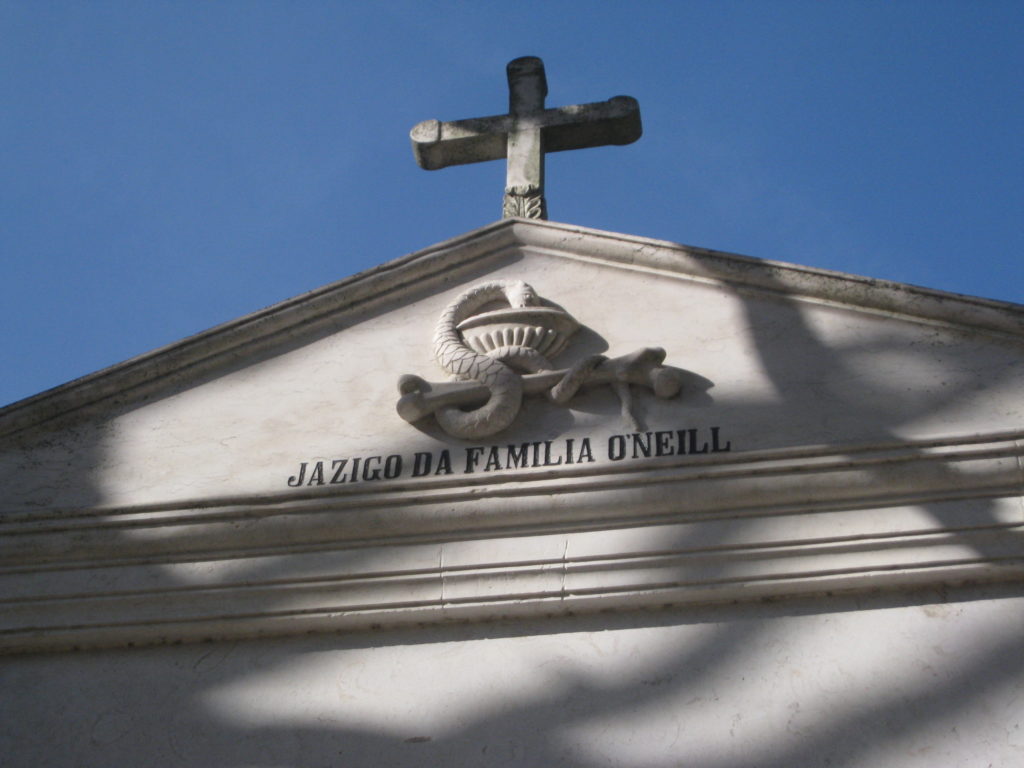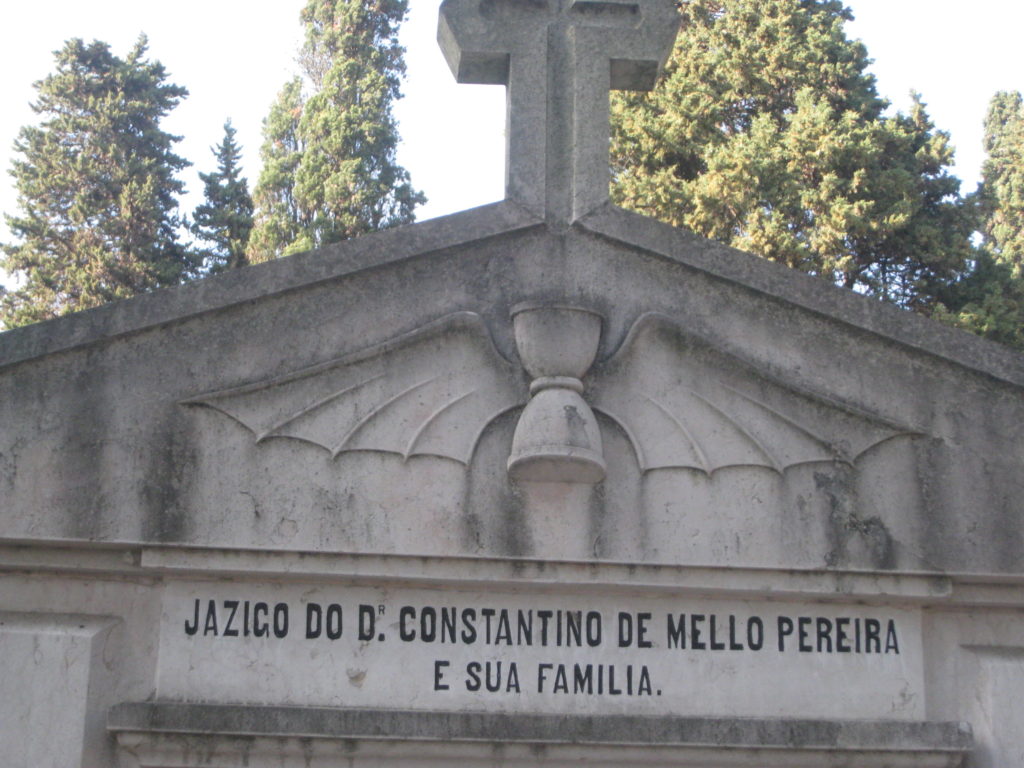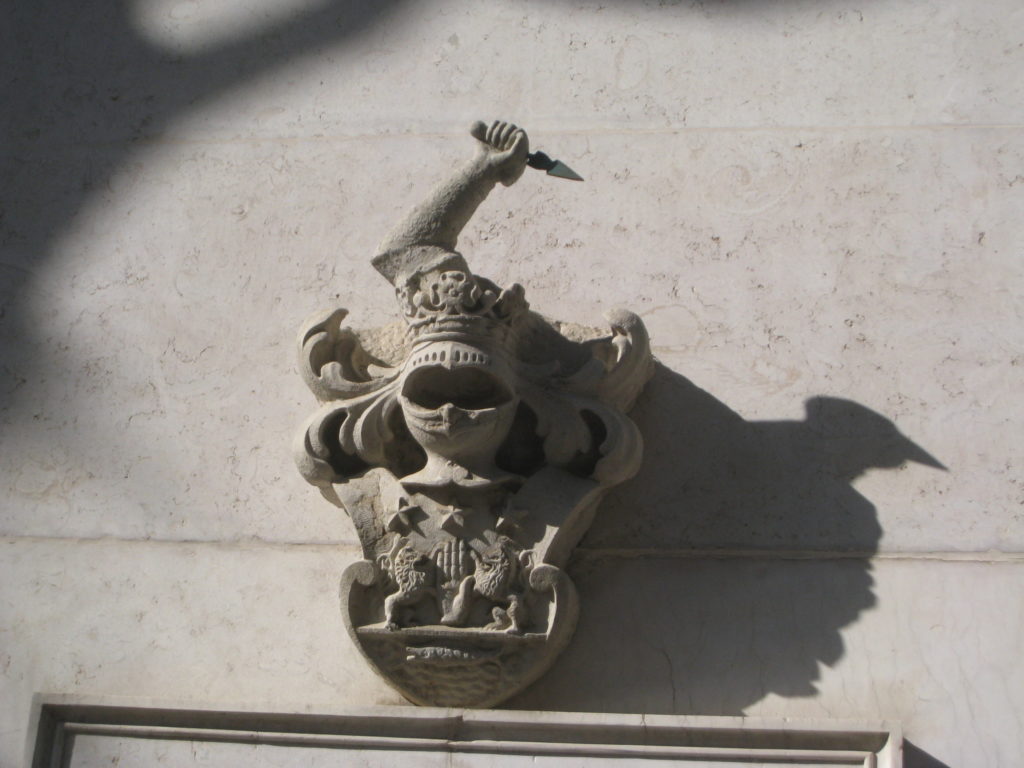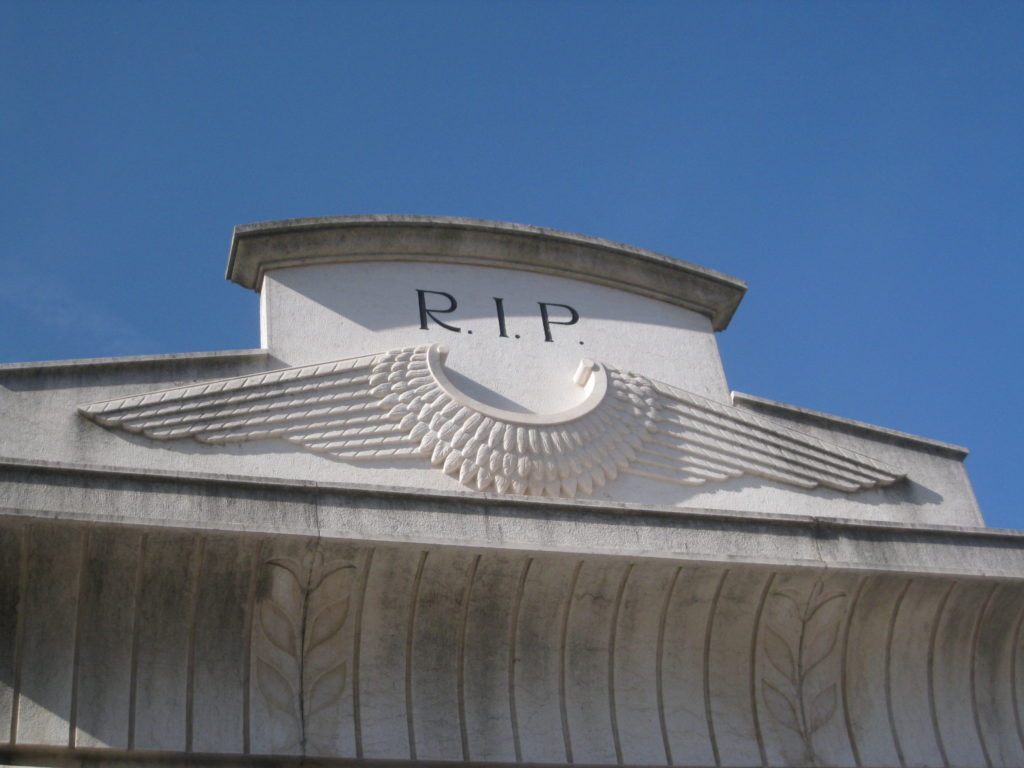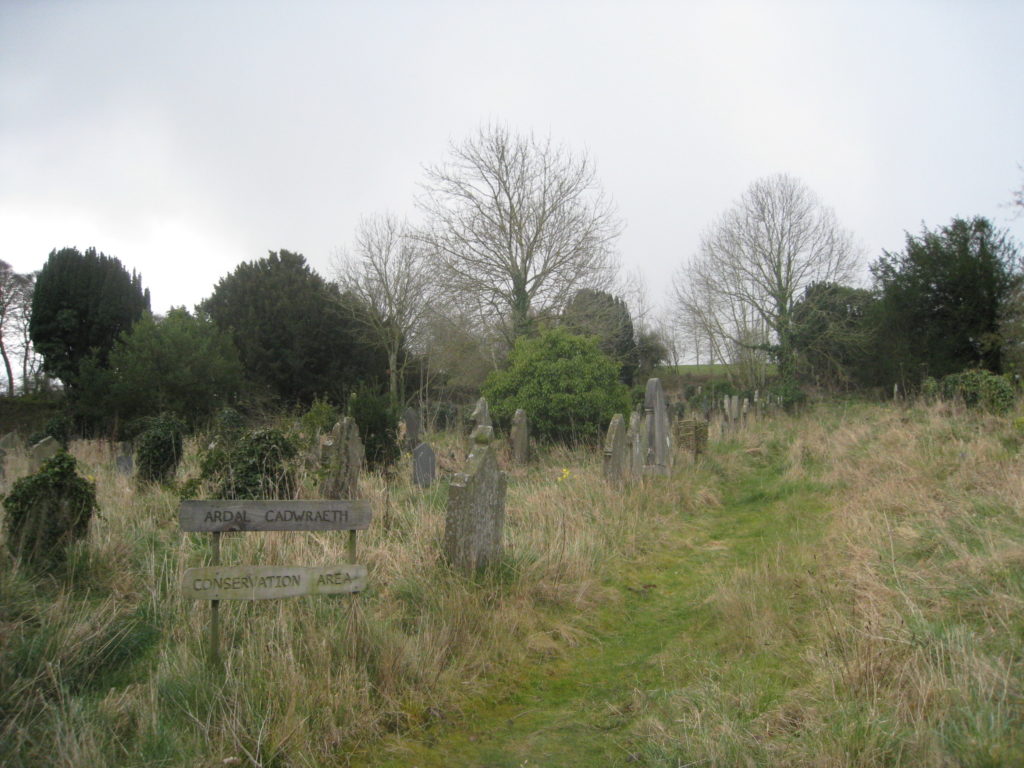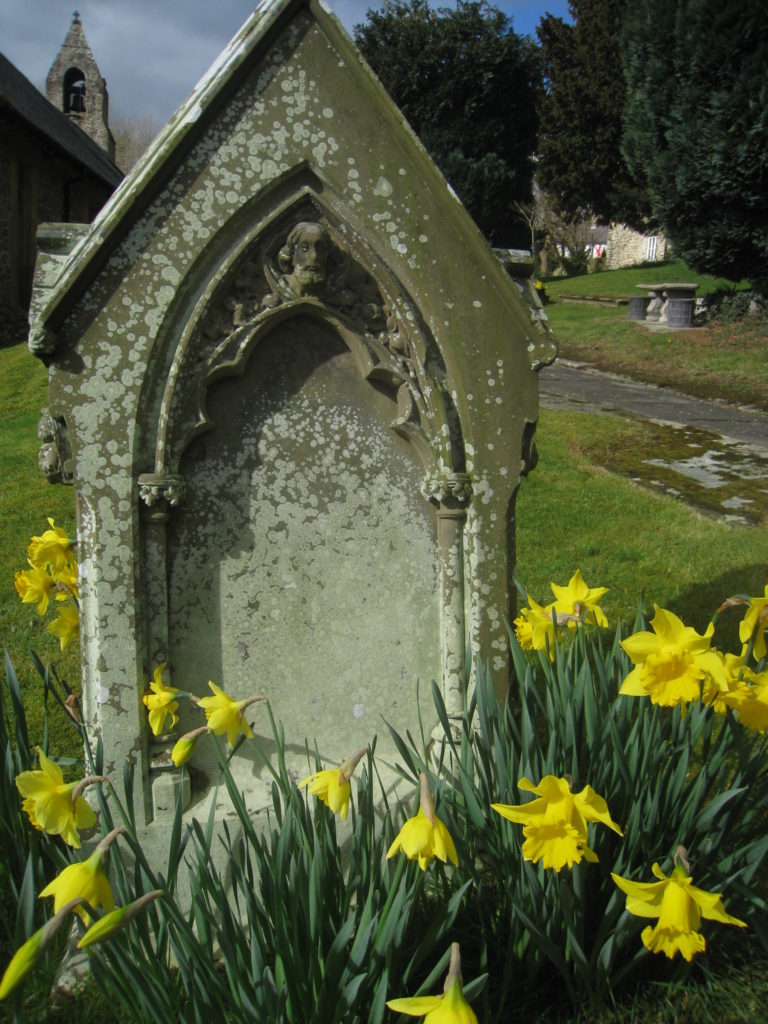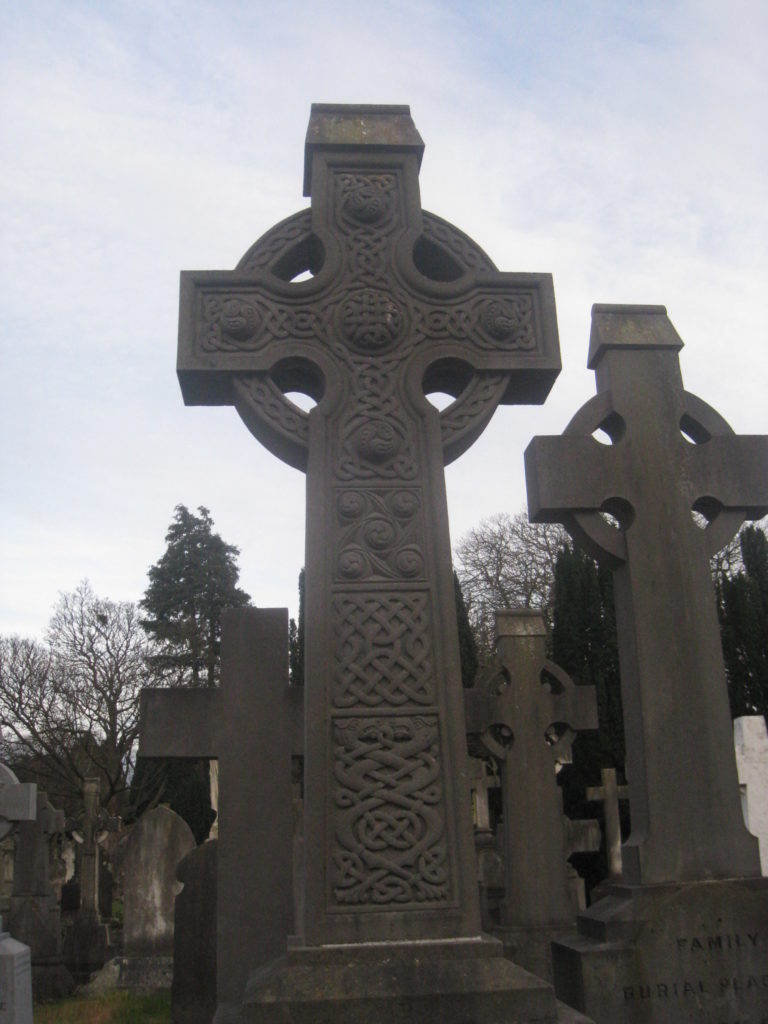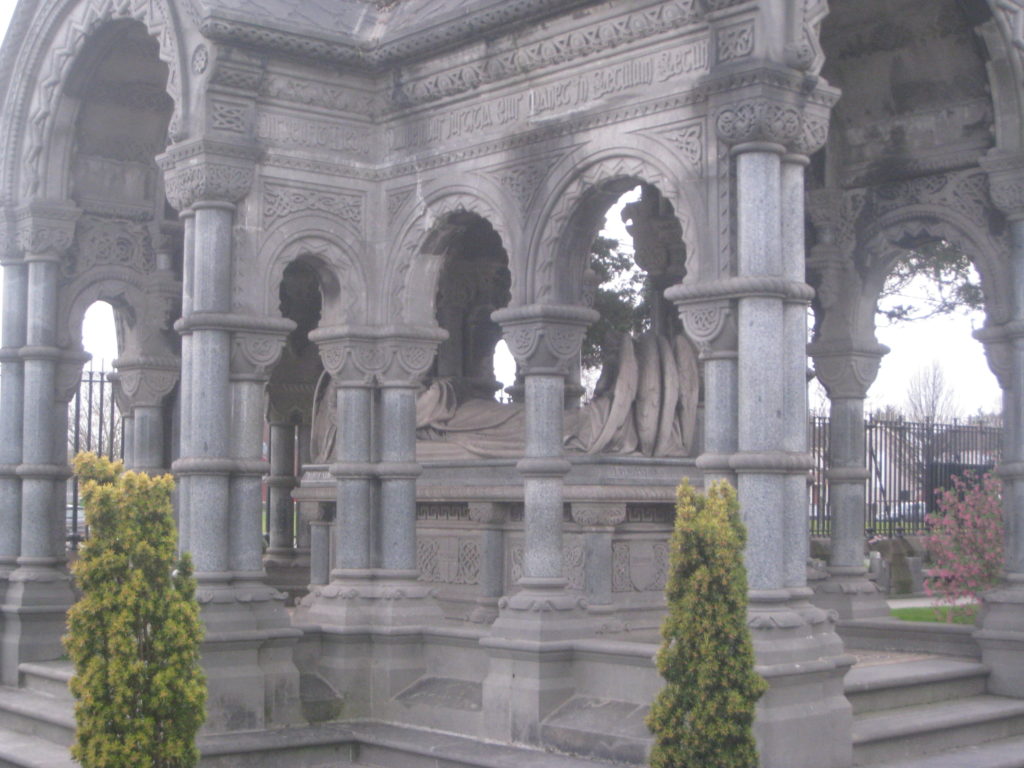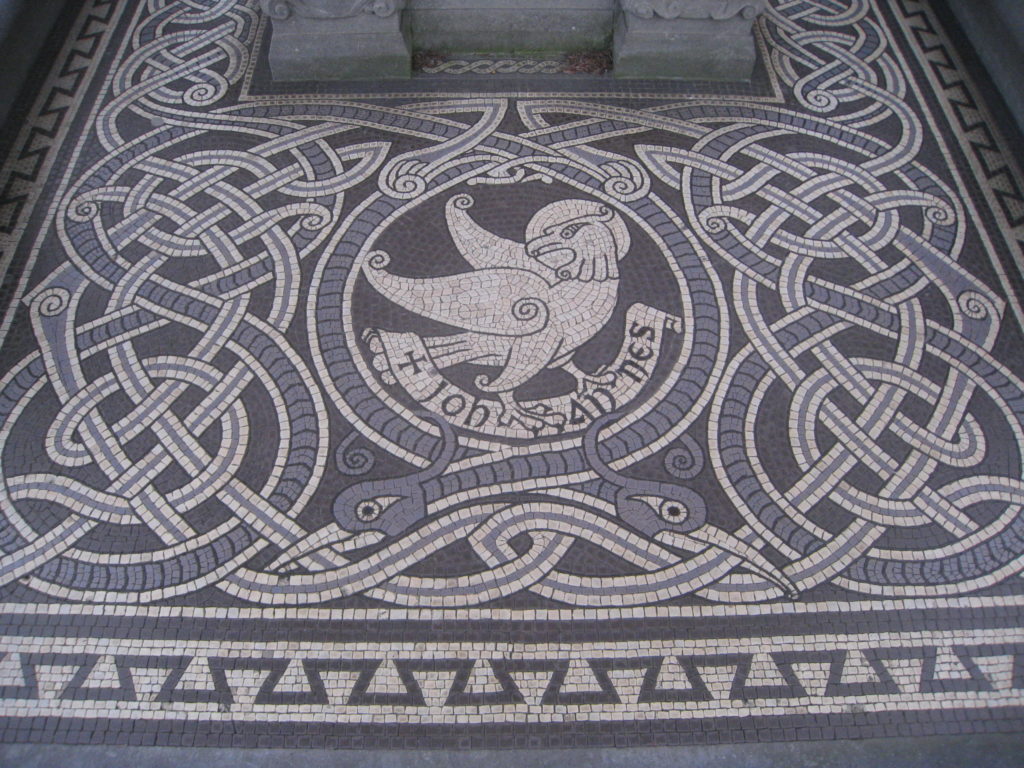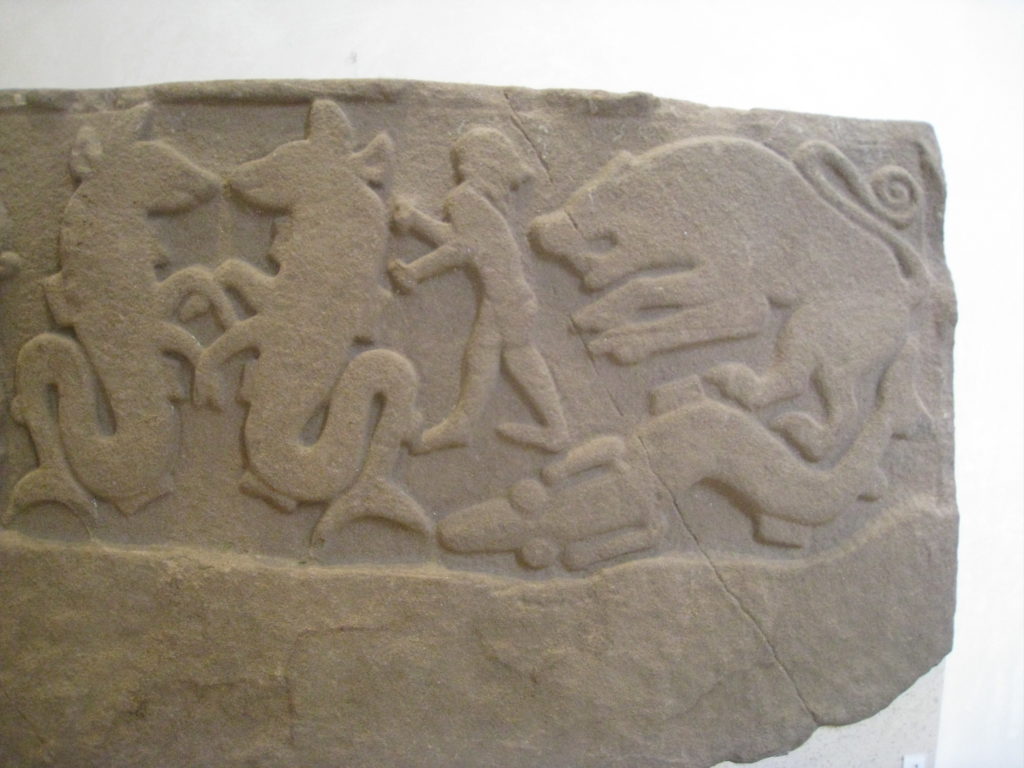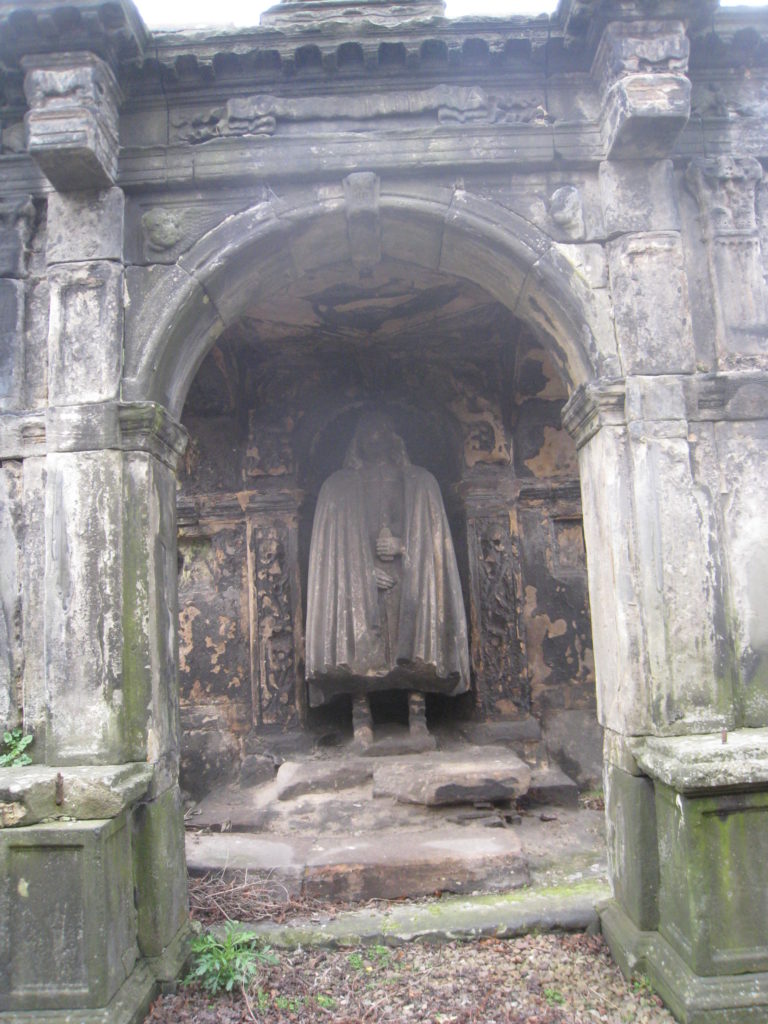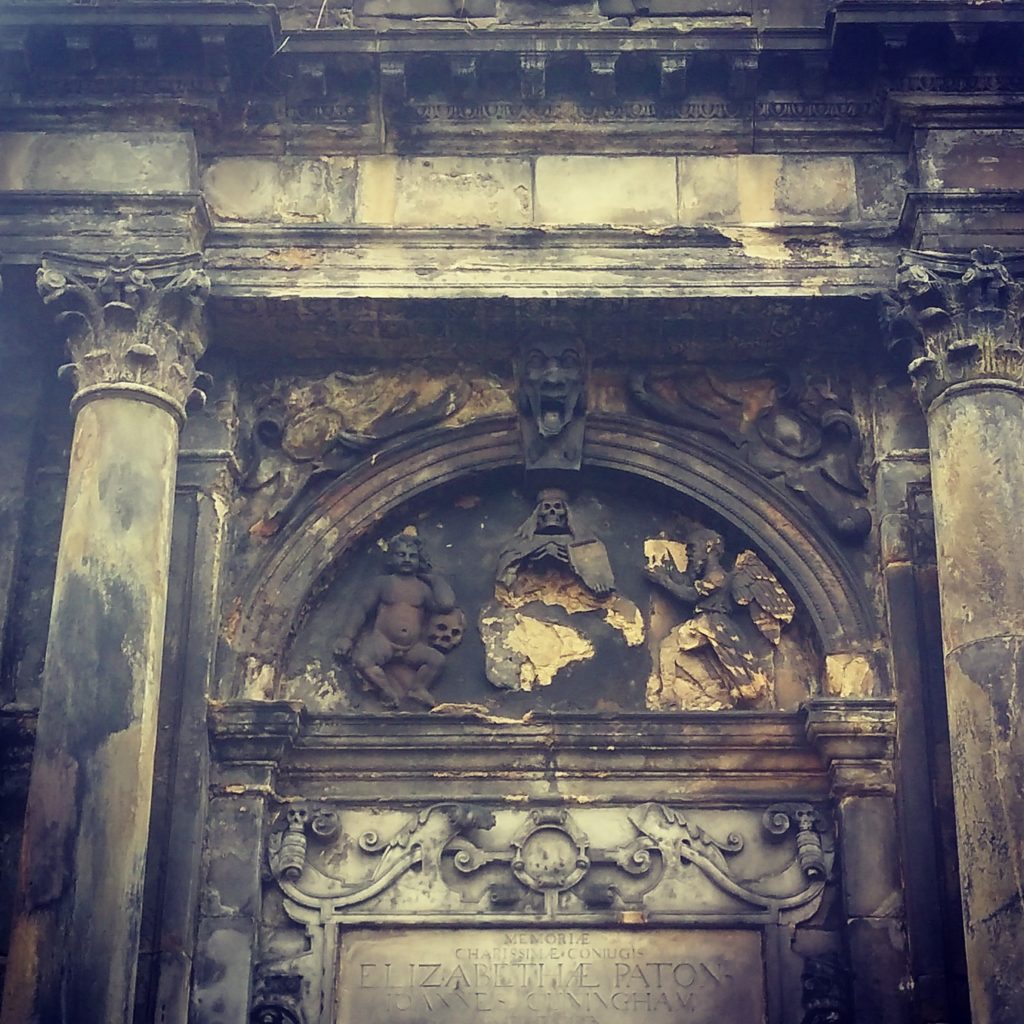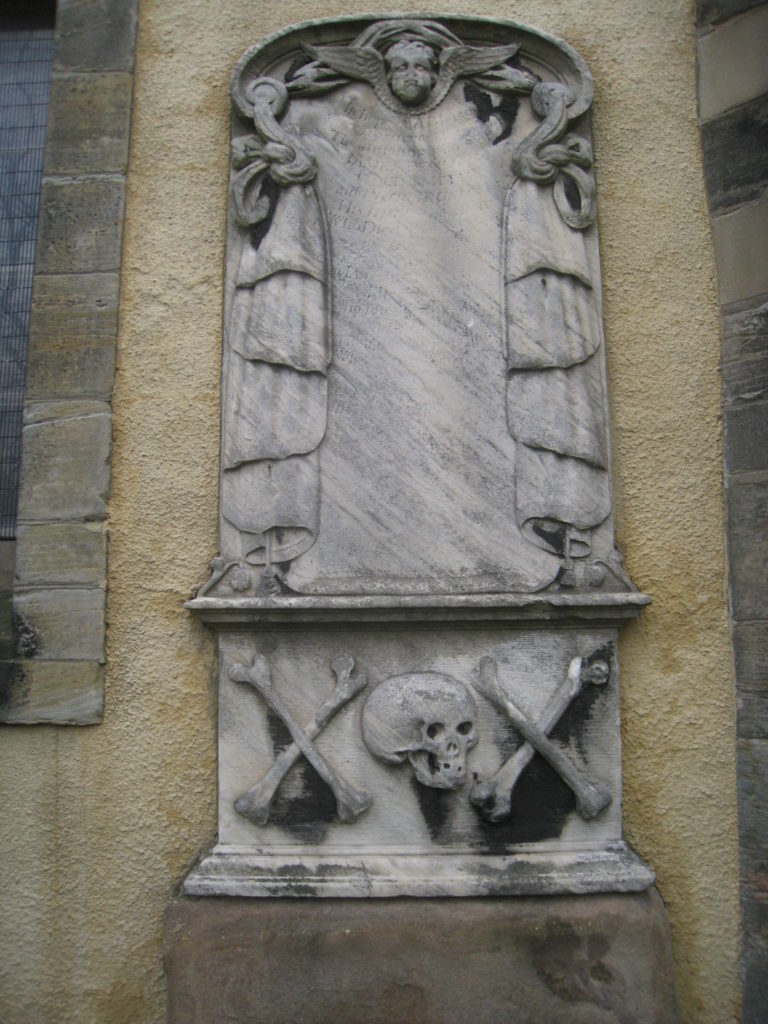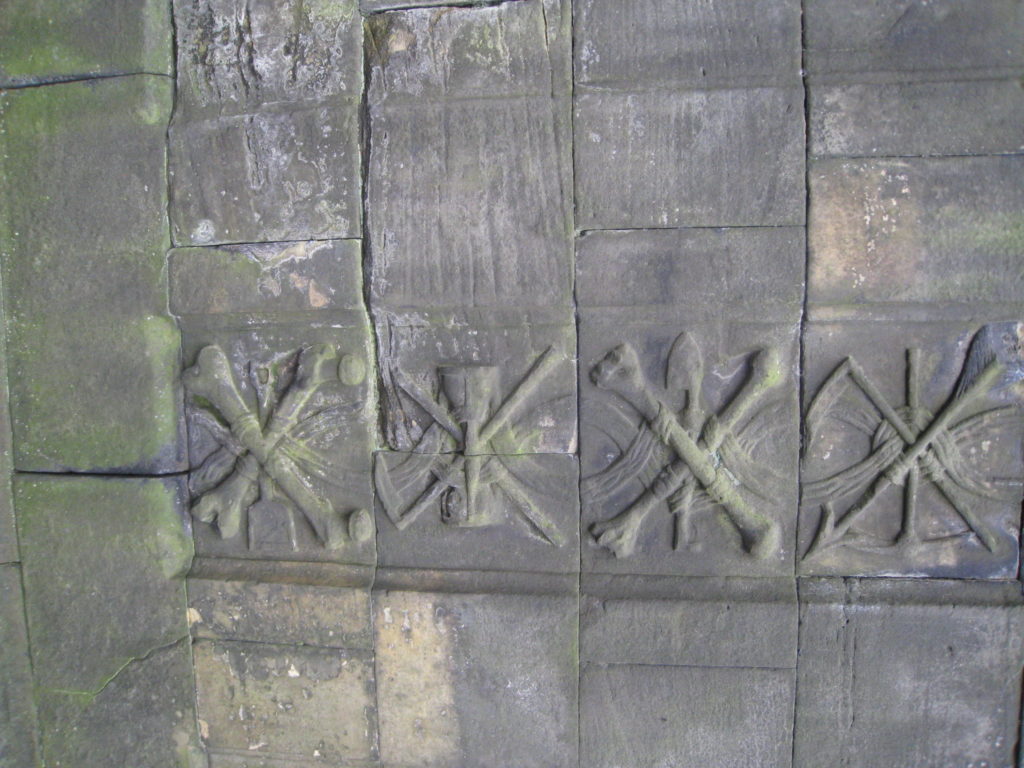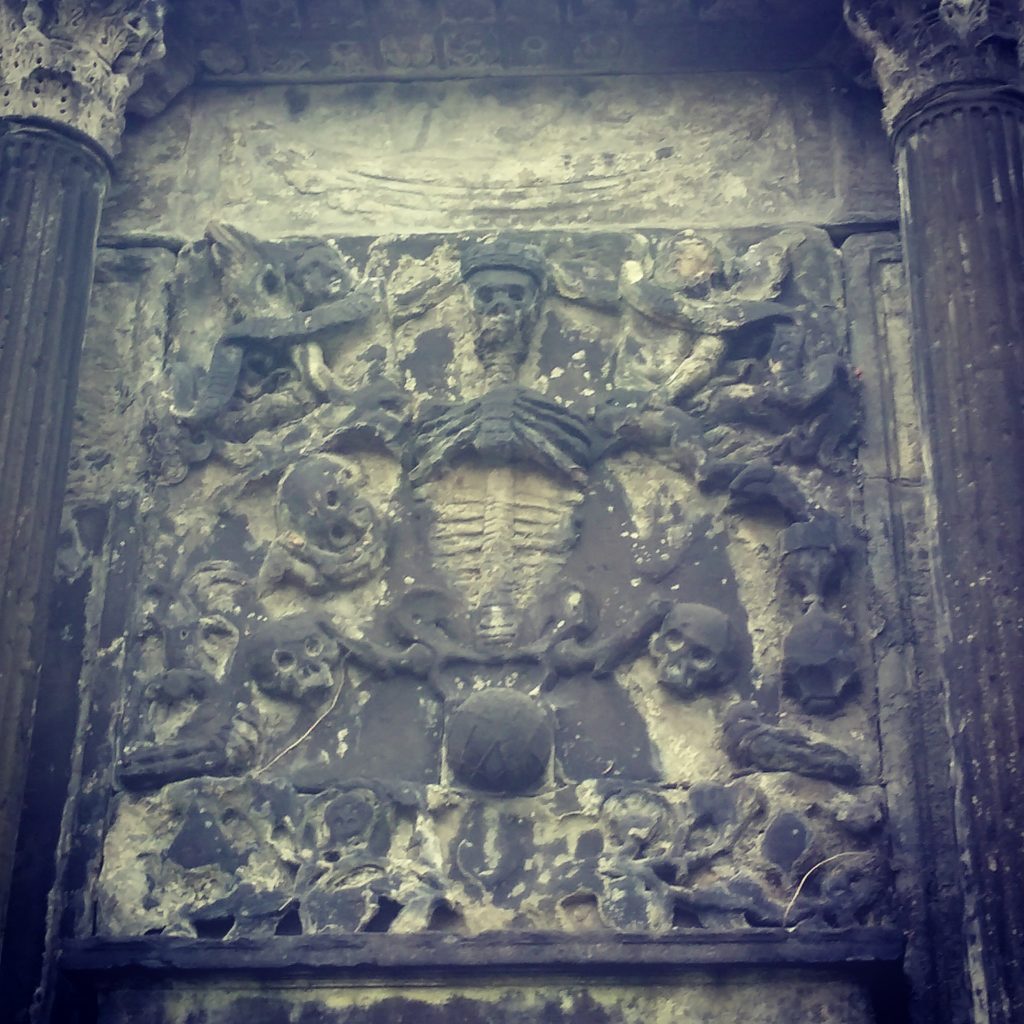Goth Spring Break
Some reflections on recent travels to Portugal, Ireland and Wales: unable to suppress my nerdly nature, I took note of some interesting contrasts in both building and burial style in these places, and the ones in the place I am most familiar with, New Orleans.
As far as building styles go, there is a striking similarity between tombs in Lisbon and those in New Orleans. Of the many New Orleans myths perpetuated by so many, a prominent one is that we have above ground tombs because of the high water table. While this is certainly not untrue, it’s also a prominent cultural tradition and an architectural style. Many of the earliest cemeteries in New Orleans were comprised mainly of in ground burials, and have been unearthed as recently as the 1970’s, much to the angst of in ground pool-desiring residents of this city. Many have yet to be unearthed. Though New Orleans is overwhelmingly perceived as “French”, the oldest surviving parts of the city are almost entirely Spanish in their origin. There are only a few surviving French buildings in the quarter, in fact, and the architectural influence in that district is overwhelmingly Spanish. Building above ground tombs is a Spanish tradition, and it can be seen throughout Latin America in places where the water table has absolutely no impact upon construction plans.
Above ground tombs are also traditional in Portugal, which the Plazares cemetery that I visited in Lisbon being a perfect example. Instead of bricking and plastering over the face of the tomb and placing a marble slab upon it, in Plazares the most elaborate tombs were enclosed with a pane of glass, with the coffins within *ideally* concealed by a lace curtain. Many of the more humble tombs were enclosed with a marble or granite tablet much like we do in New Orleans.
Another similarity between Lisbon and New Orleans is the high level of organization in cemeteries- tombs are laid out in a grid pattern just like a tiny city. Both cities suffered terribly from epidemics during much of the 19th century, and as a result large cemeteries had to be more purposely planned out to accommodate the number of burials without creating a public health hazard. The Prazares cemetery was established for this reason in 1835. Previously, many burials took place in the adros, or open space before the entrance of an important building. An adro can be a yard around a church, but it is not the same as a British churchyard. The closer to the inside of the church, or to a relic or image of a saint you were buried, signified your social privilege and believed likelihood of salvation.
With this new burial system came a new attitude about monuments. A loved ones’ status was elevated through pompous mausoleums, instead of through proximity to a church. We can see evidence of this in many places that were colonized by Catholic Europeans cultures in the 18th and 19th centuries- including New Orleans.
There are many symbols seen in both places as well- the lamb, which represents a child, clasped hands, which represent devotion, or the willow tree, a symbol of sorrow. In Portugal I saw several symbols which were new to me. The snake was a symbol I saw all over the Prazares cemetery, and is quite uncommon in the states. It symbolizes either immortality, or wickedness. The hourglass is also common. The hourglass with wings means that “time flies”. When on its’ side it reminds us that “time stops for the dead”.
The anchor is often simply an occupational symbol in sea-faring areas, or the attribute of Saint Nicholas, patron saint of seamen, who symbolized hope and steadfastness. An anchor with a broken chain stands for the cessation of life
In Ireland and Scotland, places of a decidedly more boggy nature than Portugal, burials are almost entirely in ground, with only the very wealthy residing in above ground mausoleums. Scottish cemeteries sometimes opt for wall vaults similar to those in New Orleans’ historic cemeteries, for both the wealthy and for less expensive burials. In the British Isles, graveyards were hardly more than a potter’s field for most until the reformation in the 16th Century. Until that time the wealthy were buried in the church itself, with the poor being packed into the churchyard, the result being a dense, unromantic tangle of headstones or wooden markers that have long since rotted away. In places such as Wales, a less dense population would have allowed cemeteries to sprawl out over time, in a less intentional manner. All of the churchyards I visited in Wales with my family were set up in this chaotic manner, and most were in various stages of being overtaken with undergrowth, which I found very pastoral and pleasant. Wales is still very rural, with most villages having a small church and churchyard, and apparently only 3 last names and 5 first names were allowed per village, making genealogy a bit more confusing. My grandmother is from near Conwy, and on the way to the farm from there we visited a graveyard that has been transformed into a wildlife sanctuary. Welsh cairns and henges on Holyhead Island are another topic entirely, but worth looking into if you’re interested.
While Ireland is also very Catholic, it was converted to Catholicism *relatively* recently, and aspects of paganism are much more prevalent in aesthetics. The most obvious example of this is the Celtic knot work engravings commonly seen on markers. I stayed in Dublin the majority of my time there, and visited the Glasnevin cemetery, which was founded in 1832. The Glasnevin cemetery has an excellent museum and a lot of amazing stonework on the monuments, the majority of which are Botonee crosses. There are also some incredibly elaborate sarcophagi. The Botonee Cross, so named because of its modified trefoil (three-lobed) ends, represents the trinity.
Scotland has a much higher rate of Protestantism, and also an intense history of resistance to the church of England, and initially to colonialism itself. The symbolism in Scottish cemeteries has a striking aspect of morbidity and warrior fetishization that seems to me undoubtedly linked to pre-Christian ideals. Styles and symbols are intrinsically linked to how abstract a culture’s idea of death is. In the United States our relationship to death is often very abstract, and funerary symbols focus on abstract representations of the afterlife and its rewards. Much of modern America opts for symbols that are intensely personal, such as a favorite hobby or vehicle, as opposed to cultural ideals. Modern protestant America is focused on the individual, and lavish displays of religious ideas are not a priority. Scottish funerary symbols focus unapologetically on the grim threat of mortality, with demons and skeletons instead comforting lambs and flowers. It is impossible to not think of the Picts, ancient tribes indigenous to Scotland, whose interests seemed to lie primarily in the brutal consumption of human beings by monsters, demons, wild animals, and of course each other.
In Edinburgh I visited Greyfriars cemetery, which was founded in 1561 on the site of the Franciscan friary that had previously been there. The churchyard contains the Covenanters prison, and both the prison and the cemetery are alleged some of the most haunted places in Scotland, which I would readily believe. I came to find out the reason so many burials took place in walls was not because of the unstable nature of the soil, or an aesthetic preference, but to deter “resurrection men”, the local entrepreneurs who stole freshly buried corpses to sell them to the Edinburgh Medical College for dissection. Many in-ground burials have metal grates over them for this same reason.
Some common symbols in the Greyfriar’s cemetery include bats, citizens of the underworld, arrows, which symbolize mortality and martyrdom, and wreathed skulls, who represent the inevitable victory of death over life. The skull and cross bones is a simple symbol of crucifixion.
I will leave you with a much edited list of some other interesting cemetery symbols, for reference.
Celtic Cross – The circle around the crosspiece symbolizes eternity. It’s origin can be traced to the Celtic cultures of the British Isles. There is a legend of how St. Patrick when preaching to some soon to be converted heathens was shown a sacred standing stone that was marked with a circle that was symbolic of the moon goddess. Patrick made the mark of a Latin cross through the circle and blessed the stone making the first Celtic Cross.
Eastern Cross – Used in Orthodox (Russian/Greek) Christian Religions, this cross upper horizontal shoulder representing the inscription over the head of Jesus. The lower slanting shoulder represents the footrest of the crucified Jesus.
Fleuree Cross/Gothic Cross – This flowered cross symbolizes the adult Christian by its more opened flared out ends.
Greek Cross – It has four arms equal in length and is the traditional symbol of Christian faith. The equal length drawings of the cross is pre-Christian, and in paganism, represented the four elements—earth, air, fire and water.
Hand holding heart- charity and odd fellows
Sword in heart: simon to mary at birth: “a sword shall pierce thine own soul”
Dogs- at feet of women in middle ages to represent their docility and social inferiority
Pelican- charity. St. Thomas Aquinas address Christ as the pelican of mercy, which is referenced most notably in hamlet
Sources
Stories in Stone by Douglas Keister
Symbols Found on Gravestones
Handbook by International Association of Cemetery Preservation and Dusty Smith
cemeteries in Portugal (19th century)
An historical and artistic approach by Francisco Queiroz
Glasnevin Trust Cemetery Museum

